Spain train travel is all via Renfe – Spain’s nationalised railway network, which operates the regular city-to-city, and inner-city regional train services, as well as the high-speed AVE train (Alta Velocidad Española which means ‘Spanish High Speed’), reaching speeds of up to 350 km per hour!
Related
Spain Train Travel – Why Use the AVE Train?
Book your ticket in advance and print it before boarding.
[embedded content]
With Madrid and Barcelona being connected by a short two and a half hour journey, these two cities form the major hubs from which to use the AVE Spain as the start or endpoints. While they often steal the limelight, there’s plenty of other cities being home to airports with great connections, you can literally take your pick from any corner of Spain.
The AVE Experience website also has a helpful shortlist of useful guides about Spain’s AVE Cities, from the more well-known places like Alicante, Córdoba and Valencia, underrated cities like Malaga and the lesser-explored Valladolid, Lleida and Puertollano.
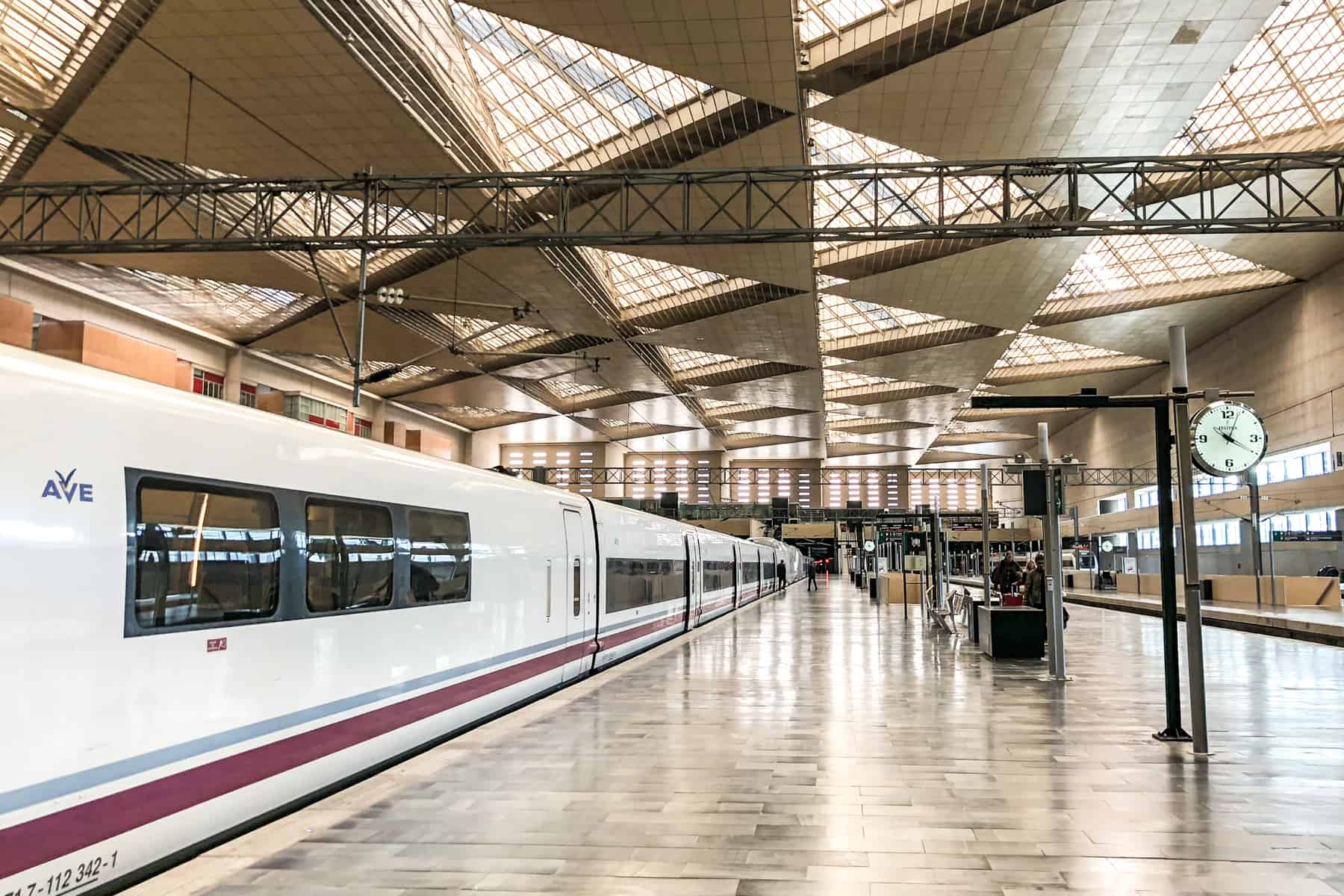
From Roman Tarragona…
Spain AVE Guide – What Route Will You Choose?
Do you want to know the best way to travel in Spain? Like the rail network throughout much of Europe, travel in Spain by train is easy, cost-effective and efficient. As a self-confessed train geek and avid city explorer, travelling around the country perfectly combined these two passions where I was able to traverse four cities in four days in a whirlwind tour via Spain’s high-speed Renfe AVE train service.
Barcelona is a good starting point for Spain train travel.
With over 2,000 stations and 2,270 kilometres of railways, train travel in Spain means being presented with a lot of choices where you can mix countryside with cities and coastlines. When it comes to the AVE high-speed options, there’s plenty of information out there to get you started with planning your route.
A relatively small country, that means you can see a lot more of Spain easily, cheaply and quickly in comparison to long bus journeys or multiple fight routes.
The romantic, classical architecture filled, flamenco dancing famed Seville is an interesting contrast. Don’t miss the Cathedral, the exquisite Plaza de España is a plaza in the Parque de María Luisa – a 1928 symbol of the city known for its grandeur of tiled fountains, opulent bridges and lush gardens – and the stunning Mudéjar architecture of the Real Alcázar of Seville, whose origins began as a royal palace, built in the 14th century by Muslim Kings. The city’s Metropol Parasol (more affectionately known as ‘the mushrooms’) is the city’s modern construction – the largest wooden structure in Europe at 26 metres high which provides a new panoramic view of the city.
Madrid to Seville – In 3 hours
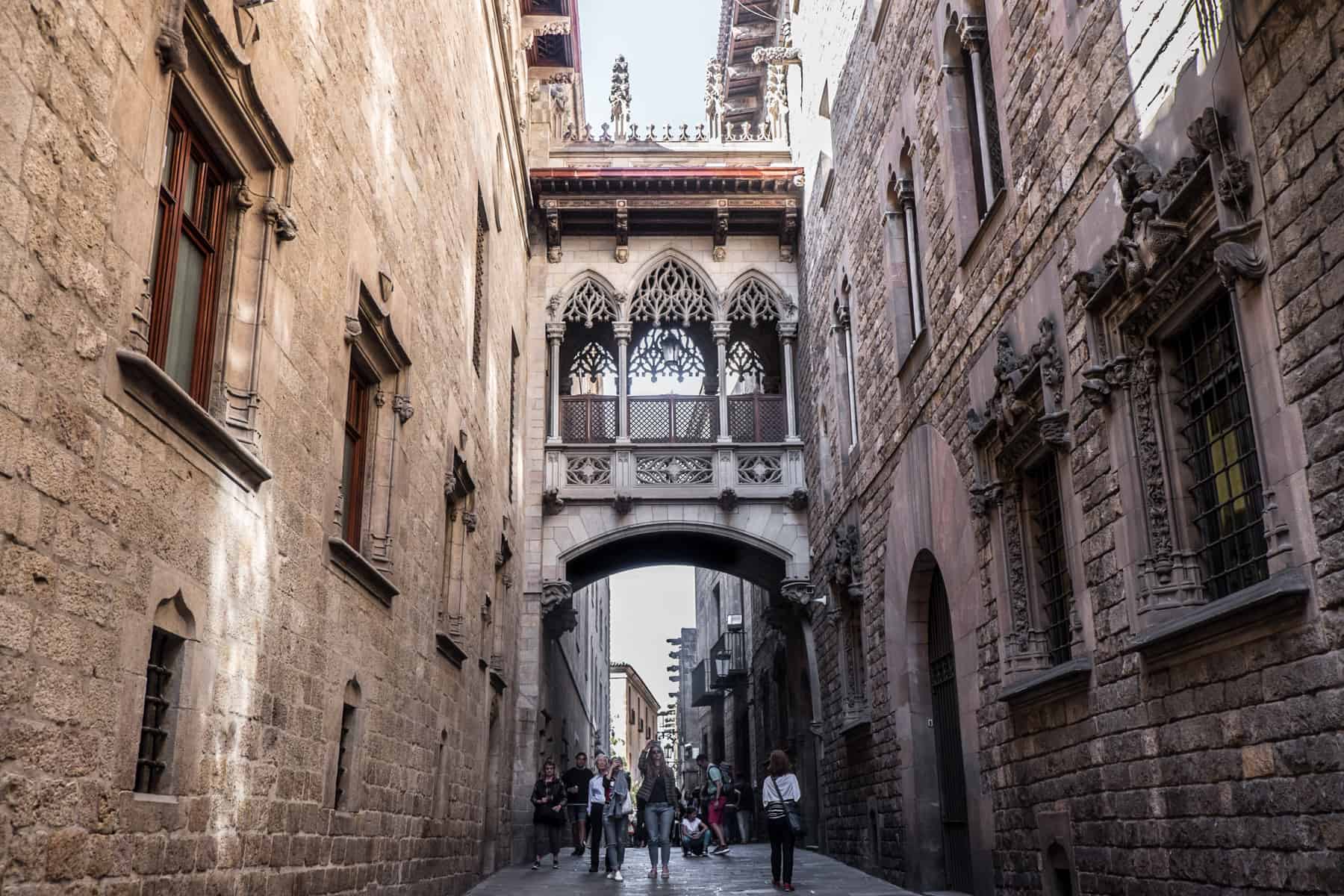
Madrid is pretty and expansive, bustling and gritty in equal measure, with classical architecture and an avenue of art museums, mixed with street art and edgy neighbourhoods. A perfect combo of sights and vibes when exploring a big capital. One of the best things to do in Madrid, apart from losing yourself in its multiple subcultures of neighbourhoods and buzzing tapas bar culture.
Places to Go in Spain
…to Seville.
This northeastern coastal city is a new city built on top of an ancient Roman city of Tarraco. You can explore its layers and golden structures including the amphitheatre and the Roman Circus, which was once used to hold the grand horse and chariot races, alongside the cathedral that now stands on the site of the former Roman temple.
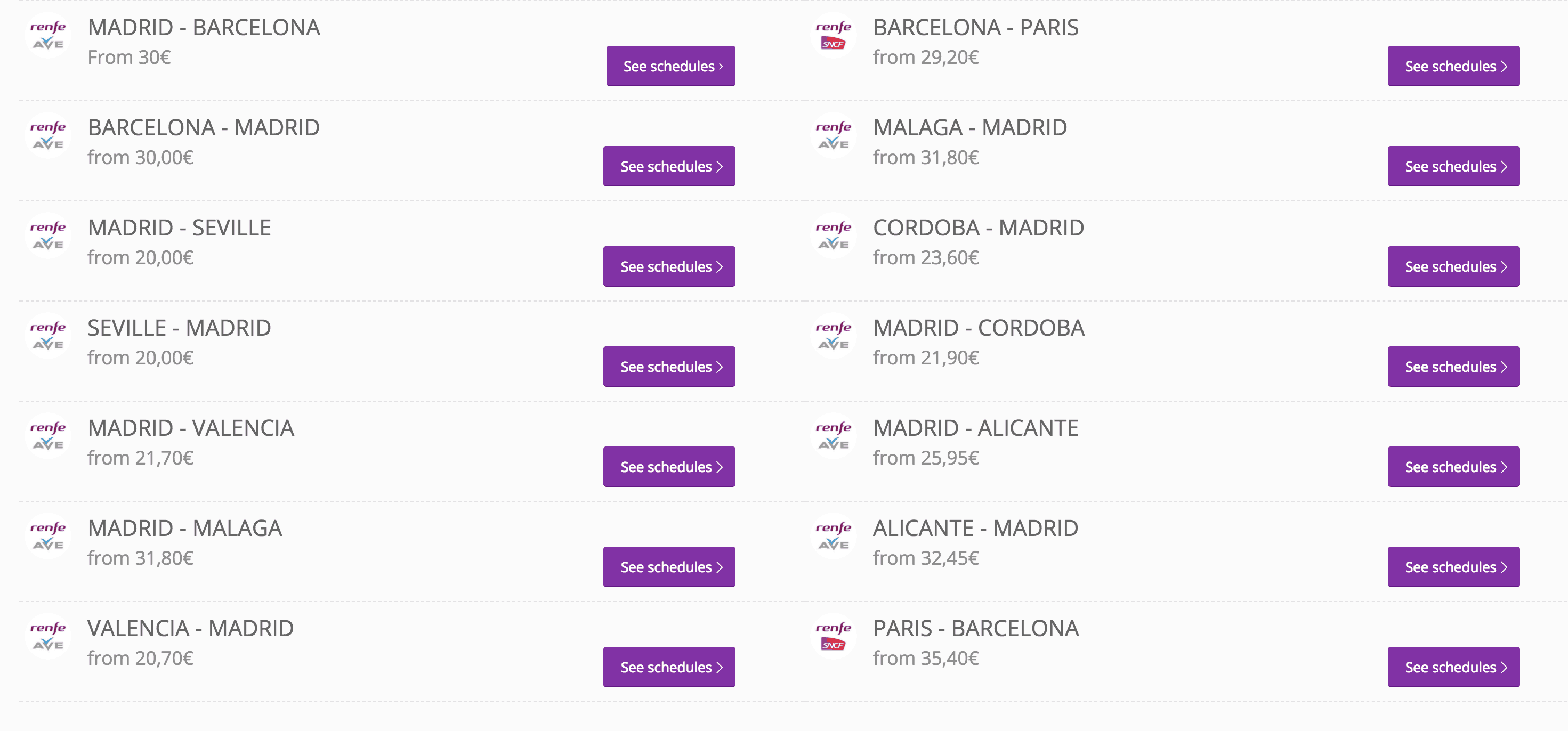
The most searched for Renfe AVE tickets is the AVE Barcelona-Madrid, alongside the Madrid to Valencia train and Madrid-Seville route.
My Twin City Routes by Train
Spain Pass prices © http://avexperience.es
Tarragona to Zaragoza – In 1 hour 30 minutes
With 2,000 stations and 2,270 kilometres of railways, travel in Spain by train is easy. This Renfe AVE guide will help get you started.
Zaragoza is the capital of the Aragon region in northeastern Spain. Its defining feature is the stunning Cathedral-Basilica of Our Lady of the Pillar – the largest Roman Catholic Church in Spain providing the best views over the multi-domed dreamscape. Another is the Ajafería Palace – the 11th century medieval Islamic which today remains one of the most beautiful of all the sights in the city as well as the seat of the regional parliament. Street art and modern structures like at the Zaragoza Expo Zone play a large role in the city’s resurgence, giving life to forgotten neighbourhoods.
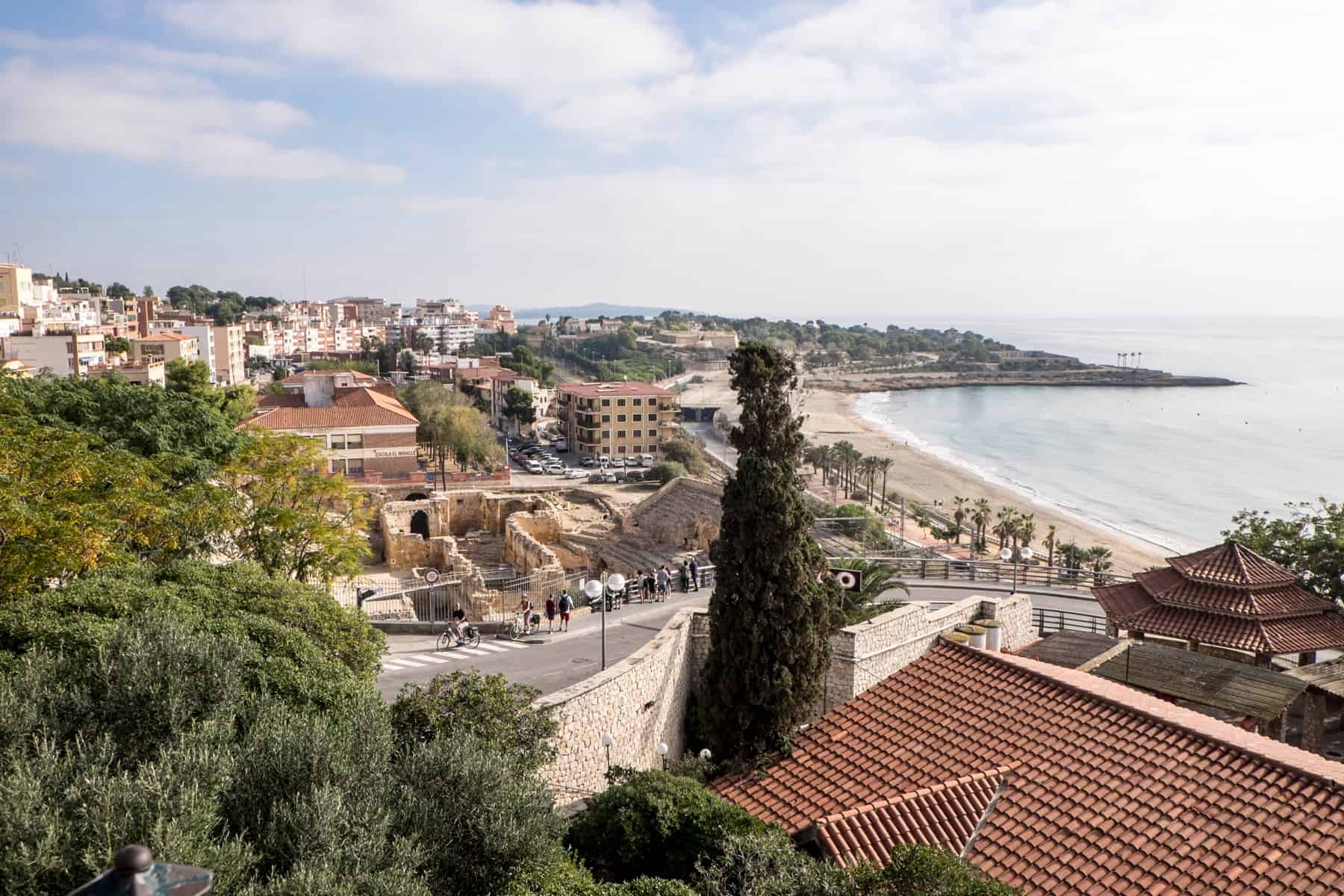
Disclaimer: This post contains affiliate links to handpicked partners, including tours, gear and booking sites. If you click through or buy something via one of them, I may receive a small commission. This is at no extra cost to you and allows this site to keep running.
In order to streamline your journey in between the train station in Spain and your arrival at the city hotel, research ahead of time and book knowing the distance and what time you need for the extra travel.
My top tip is to use Madrid as your central hub. Not only is it a cost-effective flight route from major European cities, but you can also travel from the capital in any direction on the train network, and easily return.
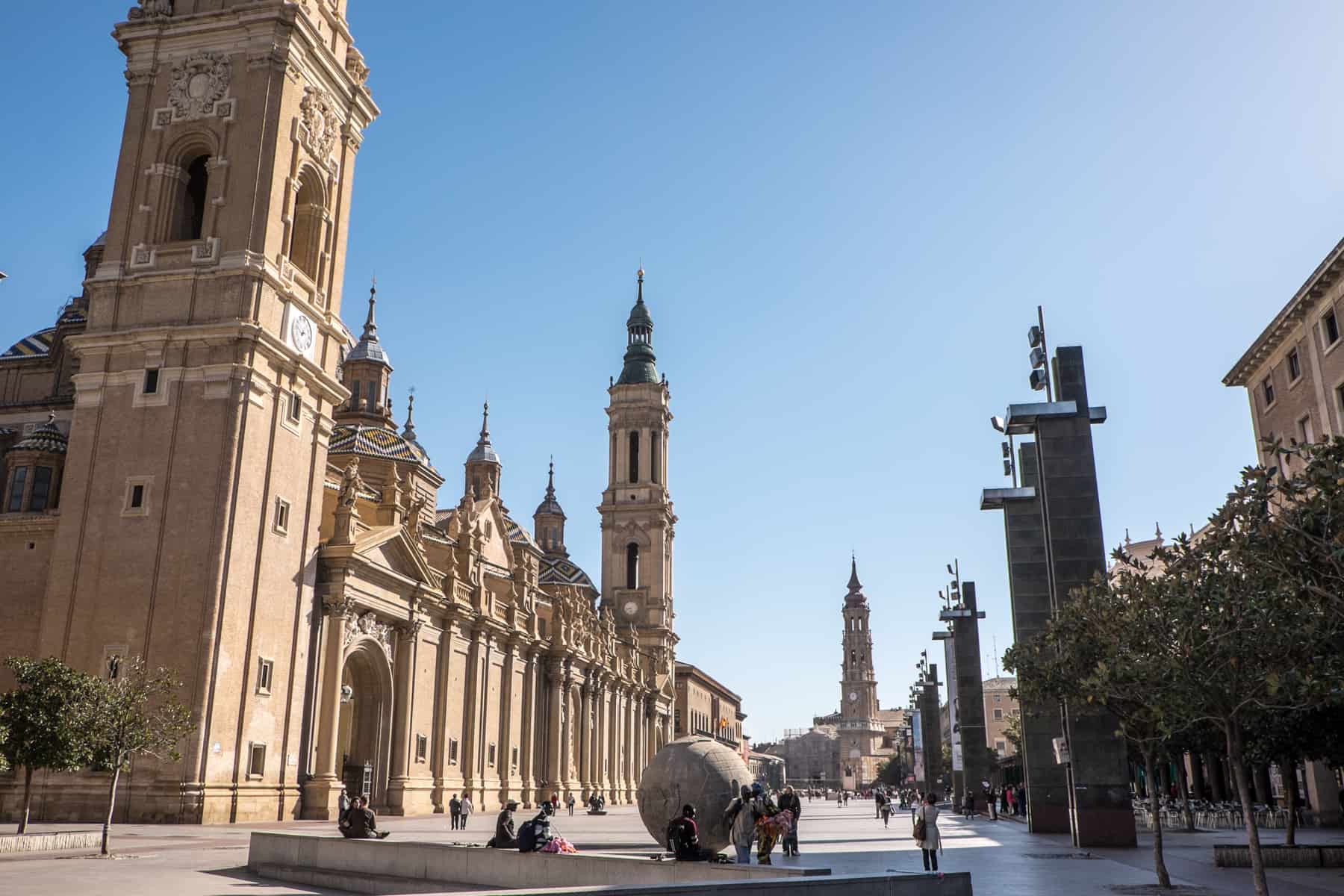
READ MORE: Spain Trips From Madrid by Train
Using the AVE Train in Spain.
My train journey was planned based on flying into Reus airport 120km south of Barcelona and out of Seville. Yet with a scattering of airports all around the country, your options for a self-made train adventure are endless.
From Madrid…
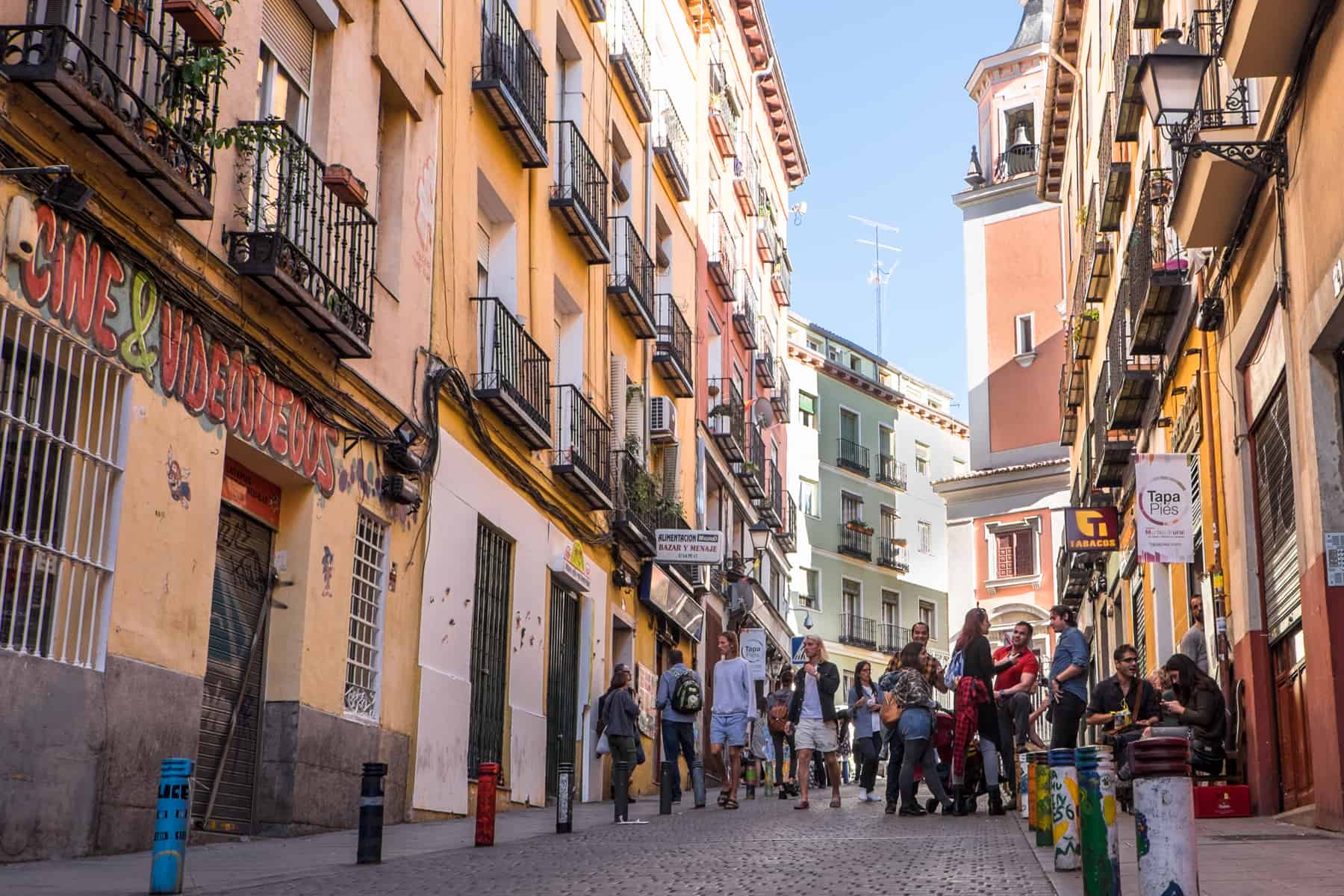
Renfe AVE Spain trains have nine classes of tickets to choose from.
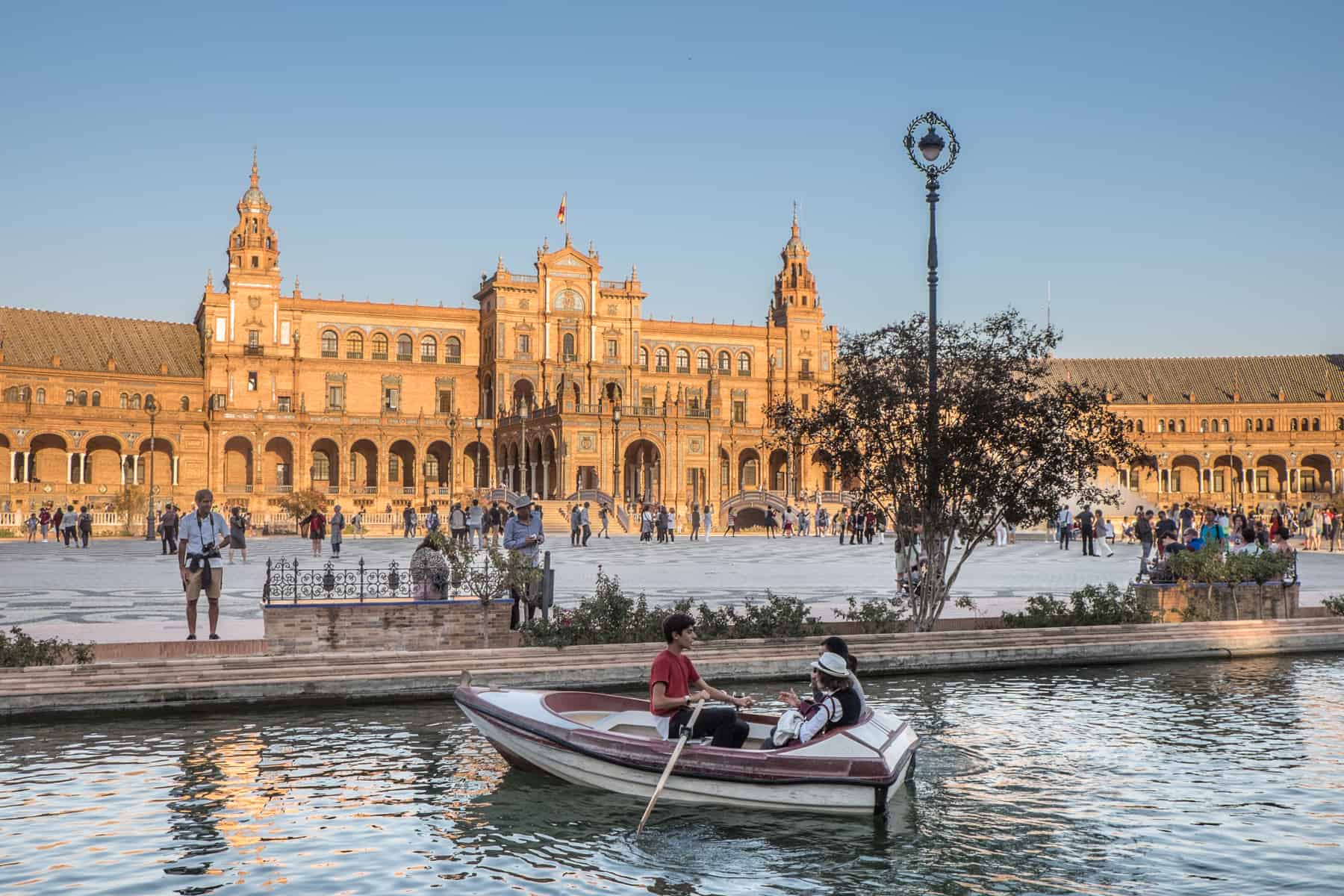
READ MORE: The Art of Travel in Zaragoza, Spain
How to Book a Renfe AVE Train Ticket in Spain
- You can book Renfe AVE tickets via the Renfe website in English here, and specific high-speed network tickets here. You can pay by Visa, Mastercard and even Paypal. All Renfe tickets have to be pre-booked since you can’t turn up on the day and book at the station.
- The AVE Spain trains have nine classes if you count the overnight trains with sleeper/bed options, but there are two main Renfe classes to consider – Turista (a second class option with 2 x 2 seating rows) and Turista Plus which is a little more spacious (with 2 x 1 seating rows). I travelled on each of my journeys with a Turista ticket, which was comfortable enough and great value for money.
Getting a Renfe Spain Train Pass
- If you are looking to book a multi-stop trip, consider getting a ‘Spain Pass’. This means you can travel using just one ticket for the AVE service and other long-distance trains. The only downside to a Spain rail pass is that you must reserve a seat before every trip, as limited space is assigned for Spain Pass holders.
- How much is a Spain Pass? First, you need to decide how many trips you are likely to take before booking. As you can see it’s more cost-effective to buy an 8 or 10 trip train pass, as the difference in cost is not much greater than the shorter passes.
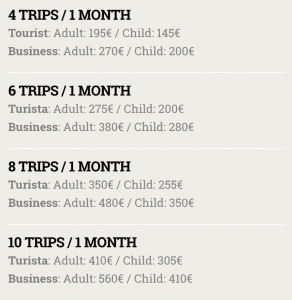
The Renfe AVE network is extensive – there are even multiple stops to choose from between two major cities.
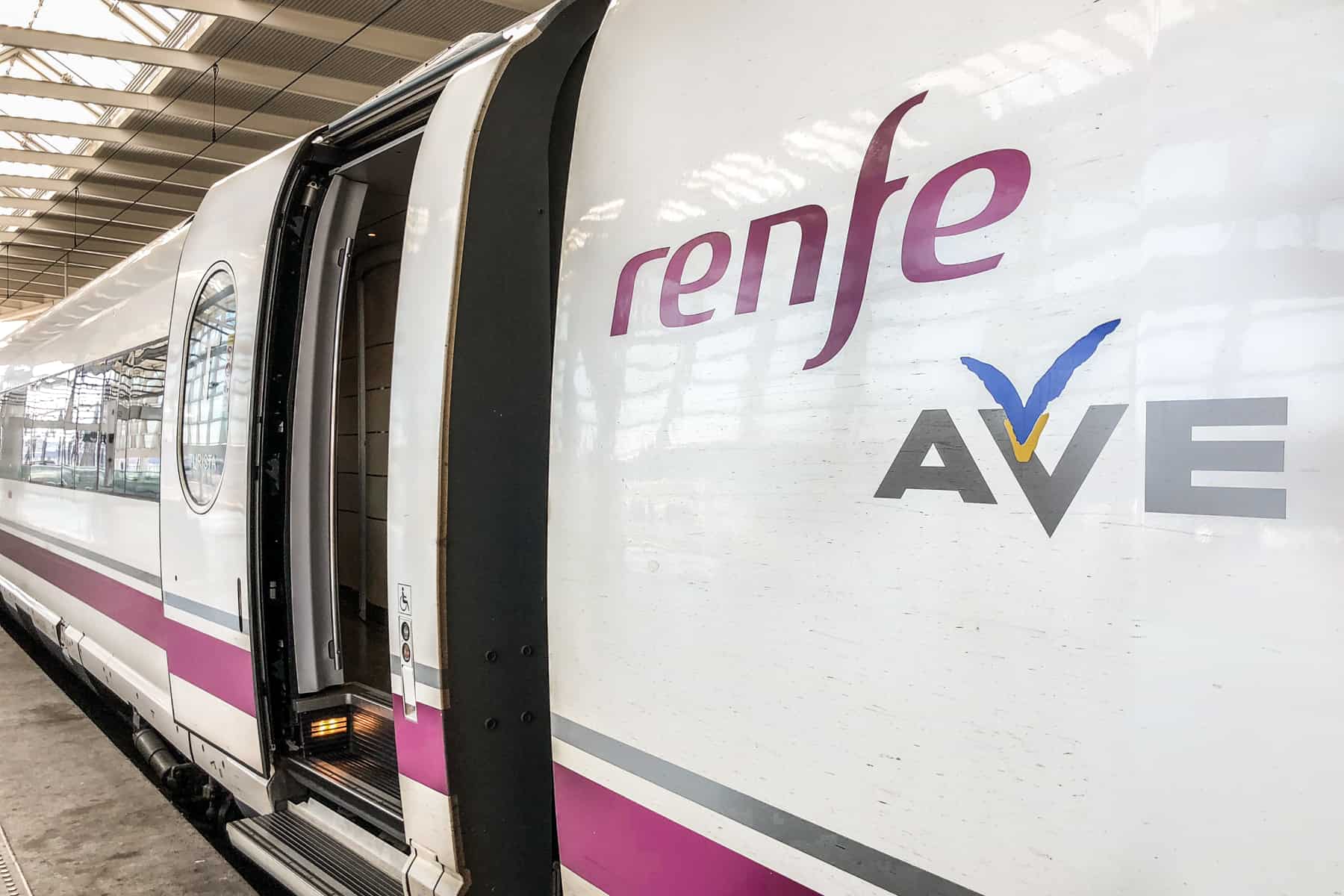

Tip on How to Travel by Train in Spain
- Book your ticket in advance. Fares are known to typically rise closer to the date of travel, especially at peak times. Some tickets can be booked up to three months before the date of travel and it is not possible to book a ticket at the station on the day.
- Print your ticket. You need to show a printed ticket ready for scanning before you board.
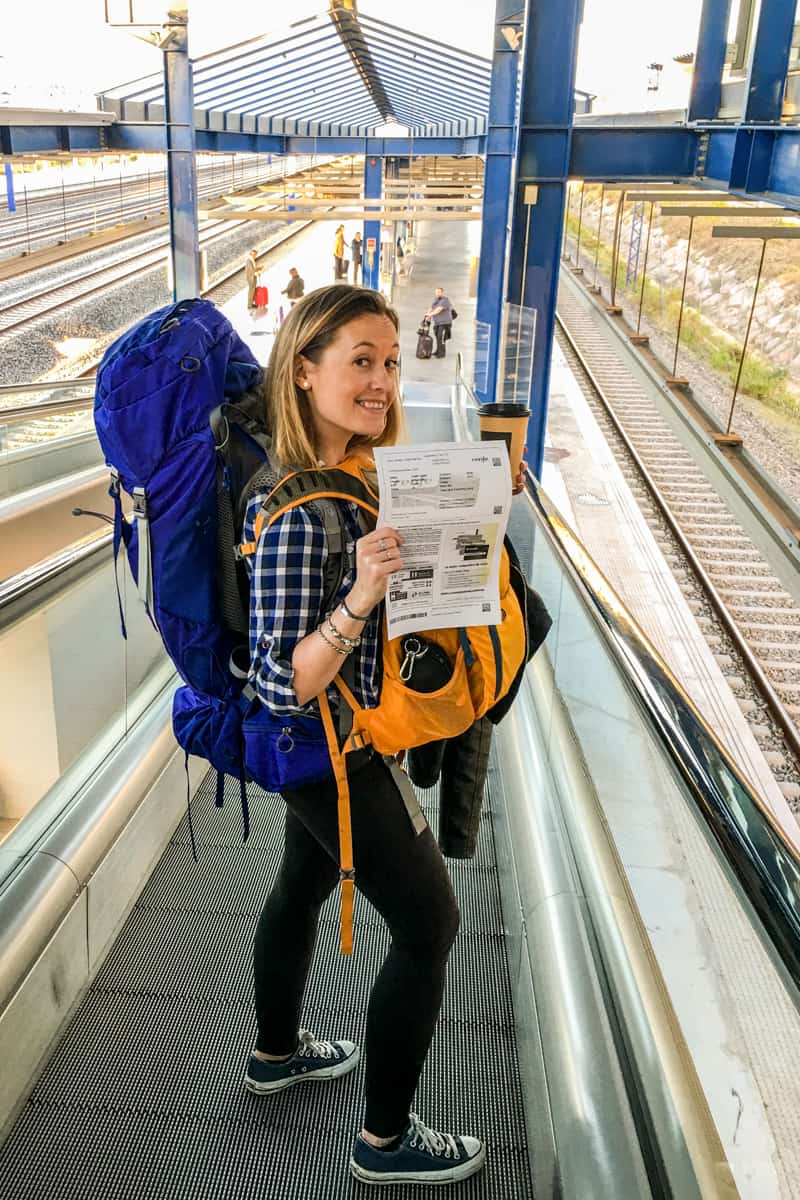
… to artistic Zaragoza.
- Arrive at the station at least 30 minutes before your train departs. This is because there is a security check, with a scanner for your bags and a ticket check before you can enter the platform.
- Give yourself time to get to and from the train station. Rail travel in Spain may cover extensive ground, but while most stations are in the centre of the major cities, some can be a 15-minute bus or taxi journey just outside of it. Research beforehand to give yourself time to plan your journey to the station prior to departing.
Booking.com
Booking Hotels in Spain – Pre-arrange Your Accommodation
While Spain’s transport infrastructure overall is well established, did you know Spain is the second country in the world with the most amount of high-speed tracks after China? And while Japan holds the title for the fastest high-speed rail, Spain still comes in 5th.Having spent a month travelling around Japan on a similar adventure, the AVE train in Spain brought back memories of the bullet trains – the ease and comfort, the unforgettable whoosh as the trains passed the station and the excitement of arriving in a new city in a matter of a few short hours.
Planning Train Travel in Spain? Pin It!
READ MORE: Tarragona – The First Roman City of Spain Aside from my Tarragona-Zaragoza-Madrid-Seville itinerary (which would make for a great seven-day trip), below are some of the most popular routes to get you started, as shown on the website where you can check the schedules.





